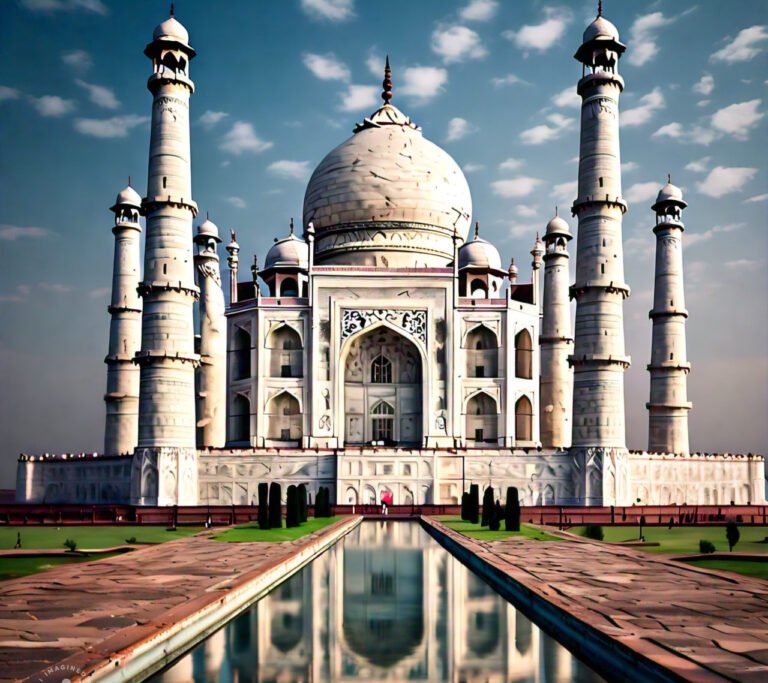Exploring World Heritage Wonders: A Journey Through Time and Culture
Around the globe, many sites have been inscribed on UNESCO’s World Heritage list due to their exceptional historical, cultural, and natural significance. These sites are considered treasures not only for their respective regions but for humanity as a whole. If you have a passion for history, culture, and exploration, visiting these World Heritage Wonders should be at the top of your travel bucket list. In this article, we will explore some of the most famous World Heritage sites that offer a glimpse into the grandeur of civilizations past and present.
Machu Picchu, Peru
Machu Picchu is one of the most iconic archaeological sites in the world. Perched high in the Andes Mountains of Peru, this ancient city was constructed by the Inca civilization during the 15th century. It is an outstanding representation of Inca architecture, culture, and ingenuity. Machu Picchu is known for its stunning location, surrounded by lush, rugged mountains that create an awe-inspiring backdrop.
UNESCO recognized Machu Picchu as a World Heritage site in 1983, not only for its historical significance but also for its breathtaking natural surroundings. The site attracts history enthusiasts and nature lovers alike, offering an immersive experience that feels like stepping back in time. The mystery surrounding its purpose—whether it was a royal estate, a religious site, or a trade hub—adds to its allure. For travelers interested in both history and nature, Machu Picchu is truly a dream destination.
The Great Wall of China, China
The Great Wall of China is one of the world’s most famous architectural feats. Spanning approximately 21,000 kilometers, it was built over centuries by various Chinese dynasties to protect the empire from invasions. The wall, which is a blend of stone, brick, and other materials, stands as a testament to China’s rich cultural and military history.
Designated a UNESCO World Heritage site in 1987, the Great Wall is not just a defense structure but also a symbol of Chinese resilience and ingenuity. Each section of the wall tells a different story, from ancient battles to the emperors who ordered its construction. Visitors can walk along its restored sections, immersing themselves in the history while enjoying panoramic views of the surrounding landscapes. The Great Wall is an extraordinary destination for those interested in both military history and ancient architecture.
Petra, Jordan
Petra, located in Jordan, is an ancient city carved directly into rose-colored sandstone cliffs. This archaeological wonder was the capital of the Nabataean Kingdom, flourishing as a major trading hub during the 4th century BCE. Petra is famous for its remarkable rock-cut architecture, most notably the iconic Al-Khazneh, also known as “The Treasury,” which is an intricately carved façade that has fascinated travelers for centuries.
In 1985, UNESCO added Petra to its list of World Heritage sites due to its cultural significance and architectural splendor. Beyond Al-Khazneh, the city is filled with tombs, temples, and homes, all meticulously carved into the cliffs. Petra provides a captivating glimpse into the ingenuity of ancient Arab civilizations. For those fascinated by archaeology and ancient history, a visit to Petra offers a unique opportunity to step into a world long past.
The Pyramids of Giza, Egypt
The Pyramids of Giza, located just outside Cairo, are some of the oldest and most recognizable structures in the world. Built as tombs for the pharaohs of ancient Egypt, these monumental pyramids have stood for over 4,000 years. The Pyramids of Giza, including the Great Pyramid of Khufu, are part of a larger complex that includes the Sphinx, temples, and other smaller pyramids.
Designated a UNESCO World Heritage site in 1979, the Pyramids of Giza are the last remaining wonder of the Seven Wonders of the Ancient World. They are a remarkable testament to the architectural and engineering skills of the ancient Egyptians. For those with an interest in ancient history, architecture, or Egyptology, the pyramids offer an unparalleled learning experience, standing as a monument to human achievement and the mysteries of the past.
The Colosseum, Italy
The Colosseum in Rome is one of the most recognizable landmarks of ancient Roman civilization. This massive amphitheater, which could hold up to 80,000 spectators, was the site of gladiatorial games, public spectacles, and even naval battles. Built in the first century AD, the Colosseum remains an enduring symbol of Rome’s imperial might and architectural prowess.
Recognized by UNESCO as a World Heritage site in 1980, the Colosseum offers visitors a glimpse into the grandeur of ancient Rome. As you walk through its corridors and stand in its vast arena, you can imagine the roaring crowds and the spectacle of gladiators in combat. The Colosseum is a must-see for anyone fascinated by Roman history, architecture, and ancient entertainment.
Taj Mahal, India
The Taj Mahal, located in Agra, India, is a masterpiece of Mughal architecture and a symbol of eternal love. Built by Emperor Shah Jahan in the 17th century as a mausoleum for his beloved wife Mumtaz Mahal, the Taj Mahal is renowned for its stunning white marble façade and intricate inlay work. The building’s perfect symmetry and reflection in the surrounding pools create an ethereal beauty that attracts millions of visitors every year.
The Taj Mahal was designated a UNESCO World Heritage site in 1983, not only for its architectural significance but also for its cultural importance as a symbol of love and devotion. Visitors to the Taj Mahal can marvel at its intricate design and the serene beauty of its gardens. For travelers with an appreciation for art, architecture, and history, the Taj Mahal offers an unforgettable experience.
Angkor Wat, Cambodia
Angkor Wat, located in Cambodia, is the largest religious monument in the world. Originally built as a Hindu temple in the 12th century by the Khmer King Suryavarman II, it was later converted into a Buddhist temple. Angkor Wat is renowned for its grand scale, intricate bas-reliefs, and towering spires. Its architecture is a stunning representation of classical Khmer style, and its layout symbolizes the Hindu cosmology.
In 1992, UNESCO added Angkor Wat to its World Heritage list, recognizing its significance as a major archaeological and cultural site. Visitors can explore the temple complex, which includes hundreds of structures spread over an area of more than 400 square kilometers. Angkor Wat offers a fascinating journey into the spiritual and architectural achievements of ancient Southeast Asian civilizations.
The Acropolis of Athens, Greece
The Acropolis of Athens is one of the most important symbols of ancient Greek civilization. Perched on a hill overlooking Athens, the Acropolis is home to several iconic structures, including the Parthenon, the Temple of Athena Nike, and the Erechtheion. These buildings, constructed in the 5th century BCE, represent the pinnacle of ancient Greek architecture and are considered masterpieces of classical design.
Designated a UNESCO World Heritage site in 1987, the Acropolis is a testament to the intellectual, artistic, and political achievements of ancient Greece. Visitors to the Acropolis can admire its grand temples while learning about the rich history of Greek philosophy, art, and democracy. The Acropolis is a must-visit for those interested in ancient civilizations and their contributions to modern society.
Stonehenge, United Kingdom
Stonehenge, located in the English countryside, is one of the most mysterious and ancient monuments in the world. Comprising a circle of massive stone megaliths, Stonehenge dates back to around 3000 BCE. Its purpose remains a mystery, with theories ranging from its use as an astronomical observatory to a ceremonial site for ancient rituals.
UNESCO recognized Stonehenge as a World Heritage site in 1986 due to its historical and cultural importance. Despite the mysteries surrounding its origins, Stonehenge continues to captivate visitors with its enigmatic presence and historical significance. For those drawn to ancient mysteries and prehistoric monuments, Stonehenge offers a fascinating glimpse into the distant past.
The Alhambra, Spain
The Alhambra, located in Granada, Spain, is a stunning example of Islamic art and architecture. Originally built as a fortress in the 9th century, it was later transformed into a royal palace during the reign of the Nasrid dynasty in the 13th century. The Alhambra is known for its intricate tilework, ornate stucco decorations, and beautiful gardens.
In 1984, UNESCO inscribed the Alhambra on the World Heritage list, recognizing its significance as a symbol of the Islamic Golden Age in Spain. Visitors to the Alhambra can explore its palaces, courtyards, and fountains, all of which reflect the blending of Moorish and Spanish architectural styles. The Alhambra offers a unique window into the cultural and artistic achievements of Islamic Spain.
Conclusion
These World Heritage sites offer a glimpse into the diverse cultures, histories, and architectural wonders that have shaped our world. From the ancient pyramids of Egypt to the majestic temples of Angkor Wat, each of these sites tells a story of human ingenuity, creativity, and resilience. Whether you’re a history buff, an architecture enthusiast, or simply a curious traveler, visiting these World Heritage Wonders is an enriching experience that connects you with the shared heritage of humanity.





